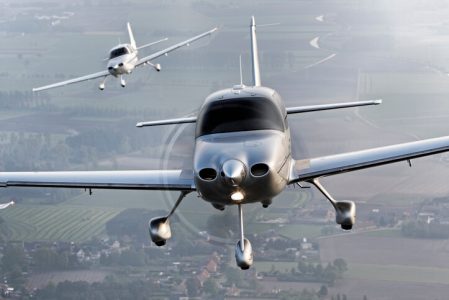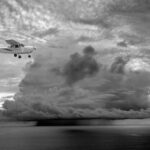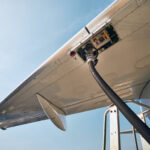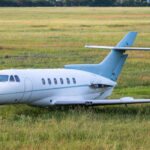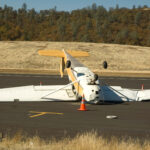Flight Training to See and Be Seen
Mid-air collisions are among the most tragic and avoidable accidents in aviation. Despite technological advances, recent events—including the Potomac River mid-air collision between a regional airline and a Black Hawk helicopter, as well as several fatal collisions involving general aviation aircraft—serve as stark reminders that pilots must remain vigilant. Under FAR Part 91.113, it is every pilot’s responsibility to “see and avoid” other aircraft. This shared duty becomes especially critical near non-towered airports, in traffic patterns, or in busy airspace where visual cues and communication are the primary defense. Mid-air avoidance should start early in a pilot’s flight training, beginning with when mid-air collisions are most likely to happen.
Common Mid-Air Scenarios
When looking for other traffic, most pilots scan straight ahead, with an occasional glance to the left or right. Unfortunately, this is not the area of most concern when considering mid-air collisions. According to the AOPA Air Safety Foundation (ASF), 82% of mid-air accidents occur from the rear. Additionally, 45% occur in the traffic pattern, mostly during approach and landing when both aircraft are on final or over the runway. Being familiar with these statistics should help pilots remain extra vigilant during these phases of flight, but there are more safety habits to consider.
Developing a Strong Scan
A strong visual scan is the pilot’s first and most important tool. Unfortunately, scanning isn’t just about looking—it’s about seeing. A proper visual scan technique involves dividing the sky into segments and pausing every 10–15 degrees for at least one second. According to the FAA’s Pilot’s Handbook of Aeronautical Knowledge, continuous sweeping of the eyes is less effective than segmented scanning because our eyes need time to focus and detect movement. In dual-pilot operations, making sure that one pilot maintains an outside scan at all times—especially during taxi, climb, descent, and maneuvering—can dramatically reduce risk. In single-pilot operations, a rule of thumb is to prioritize outside scanning over programming avionics during high-workload phases, and to use autopilot if available to free up attention for traffic detection.
Even with ADS-B and traffic alerts, nothing replaces the effectiveness of eyes out the window. Pilots should be especially cautious when operating in or near:
- Non-Towered airports during pattern entry and departure
- Busy airspace like Class C or D near metro areas
- Practice areas used by multiple flight schools
- VFR corridors near major cities or scenic landmarks
Best practices for mid-air collision avoidance include:
- Use proper radio calls with position reports in the pattern and practice area
- Tune radio frequencies BEFORE you get in the airport traffic area.
- Monitor the common traffic advisory on your second radio if you are talking to approach control.
- If you hear another aircraft in the pattern, but are not sure of its location, ASK.
- Check behind you and below you at least once on final.
- Slow down! Slower speeds allow for more reaction time.
- Follow right-of-way rules (FAR 91.113) and standard pattern entries.
- Always report your location when leaving the traffic pattern – most pilots do not do this.
- If on an instrument approach, report your position in miles from the airport, not navigation fixes.
- Conduct 10–15° segment visual scans, pausing briefly in each.
- Assign pilot monitoring and pilot flying duties in dual-pilot operations.
- Use exterior lights (landing, strobes, nav) for visibility in high-traffic areas.
- Avoid heads-down time during critical phases of flight.
- Use the “sterile cockpit rule” below 10,000 feet AGL when possible.
To put this into perspective, the 2022 mid-air collision in Watsonville, CA involved two aircraft converging in the pattern without adequate communication. Likewise, a 2021 training accident in Chandler, AZ resulted in fatalities when both aircraft failed to visually acquire each other in time. The 2025 Potomac River mid-air resulted in the loss of 67 lives and should have been completely preventable. These tragedies show that communication, situational awareness, and disciplined scanning are essential. For student pilots, these lessons should be taught early—not only with visual diagrams and FAA regulations, but with real-life examples, case studies, and role-playing scenarios.
Conclusion
Teaching the “see and be seen” principle goes beyond reciting regulations. During flight training, instructors should model proper scanning and traffic awareness during every flight and quiz students on where threats may be coming from. Encourage students to verbalize their scan (“clear left, clear right”) and use tools like traffic pattern diagrams, ATC playback, and simulation exercises to build anticipation and awareness. The goal is to create not just rule-followers, but habitually alert pilots who are always looking out—not just for their own safety, but for the lives of everyone in the sky.

